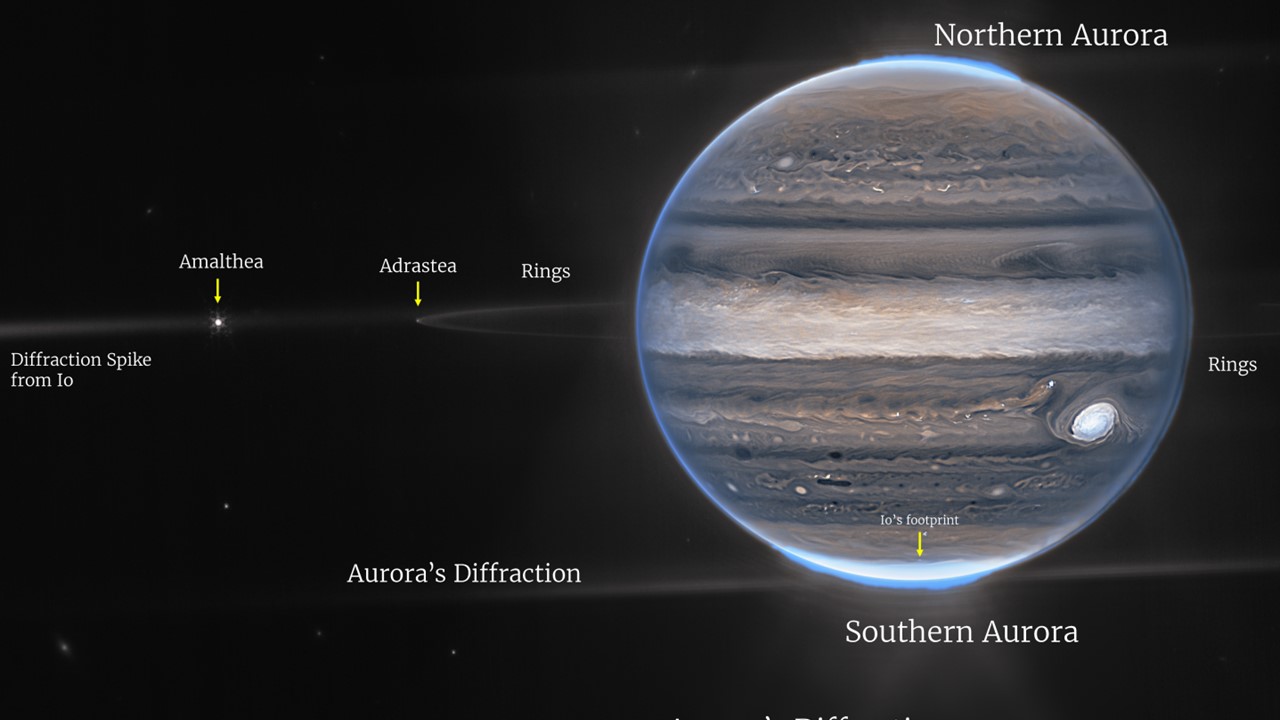Images showing Jupiter’s Auroras captured by NASA’s James Webb Space Telescope has enthralled space enthusiasts and scientists alike.
The newest release, two images, come from the observatory’s Near-Infrared Camera (NIRCam), which has three specialized infrared filters that showcase details of the planet. Since infrared light is invisible to the human eye, the light has been mapped onto the visible spectrum. Generally, the longest wavelengths appear redder and the shortest wavelengths are shown as more blue. Scientists collaborated with citizen scientist Judy Schmidt to translate the Webb data into images.
The images are composite, meaning they are combined multiple images taken with the telescope's Near Infrared Camera (NIRCam) — each using a different filter — into a single, high-definition image.

Webb NIRCam composite image from two filters – F212N (orange) and F335M (cyan) – of Jupiter system, Credit: NASA, ESA, CSA, Jupiter ERS Team; image processing by Ricardo Hueso (UPV/EHU) and Judy Schmidt.
In the wide-field image, you can see Jupiter's faint rings, as well as two of its moons: Amalthea is the bright dot on the far left, while Adrastea is the faint dot at the edge of the rings, located between Amalthea and Jupiter. Behind the three celestial bodies, the faint dots of light are suspected to be galaxies.
The second image is a close-up of Jupiter, which used three filters to capture the details of its stormy atmosphere, including the glowing auroras.

Webb NIRCam composite image of Jupiter from three filters – F360M (red), F212N (yellow-green), and F150W2 (cyan) – and alignment due to the planet’s rotation; the orange glow around the poles is the aurora. Credit: NASA, ESA, CSA, Jupiter ERS Team; image processing by Judy Schmidt.
"The brightness here indicates high altitude — so the Great Red Spot has high-altitude hazes, as does the equatorial region," said Heidi Hammel, Webb interdisciplinary scientist for solar system observations and vice president for science at AURA. "The numerous bright white 'spots' and 'streaks' are likely very high-altitude cloud tops of condensed convective storms."
Webb observes light in the infrared range, not the visible light range, so the colors of the two images are not the colors we observe with the naked eye. The infrared data has been mapped onto the visible light spectrum, so these images are "false-color," not "true-color."
-NASA/Space